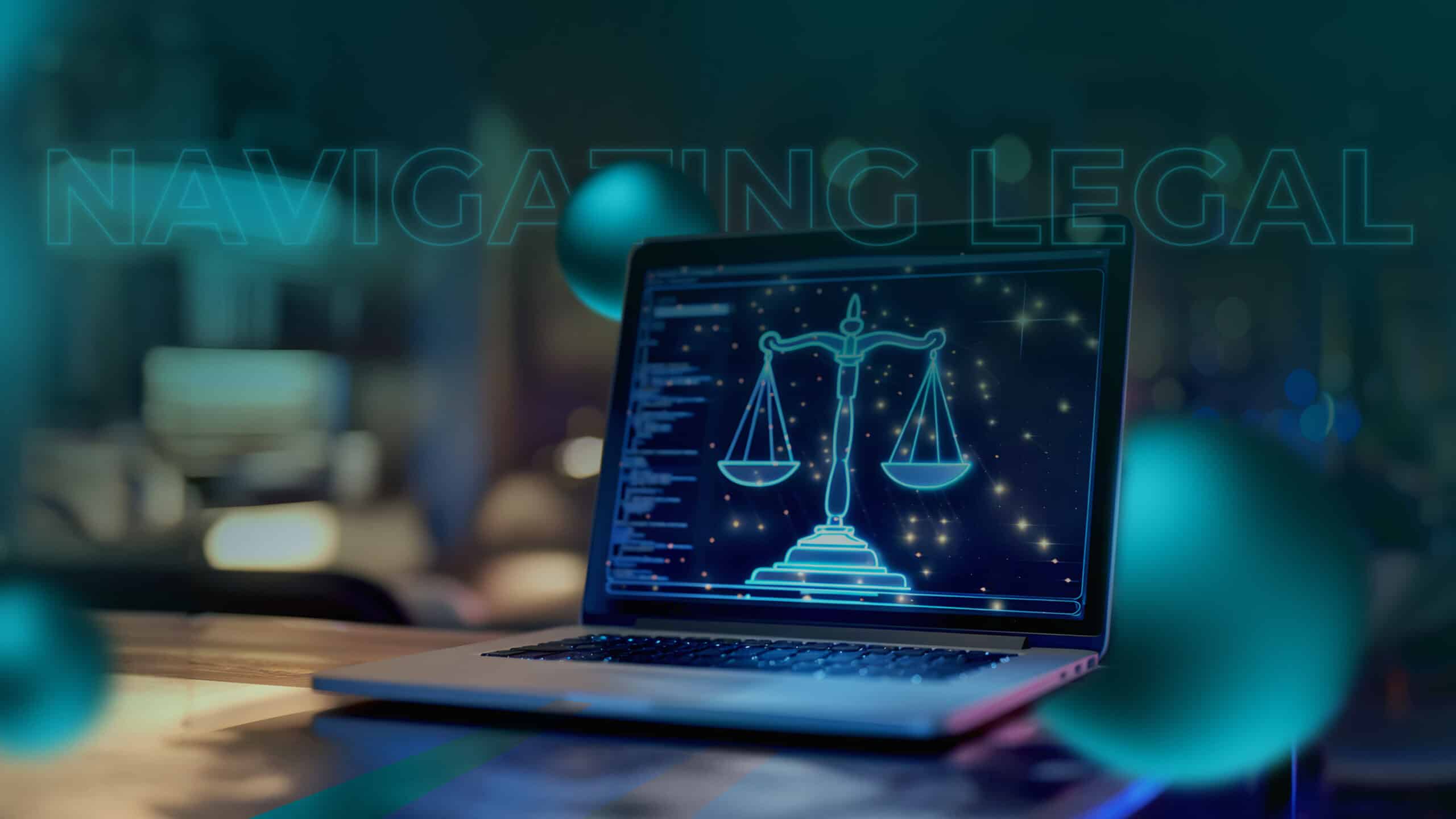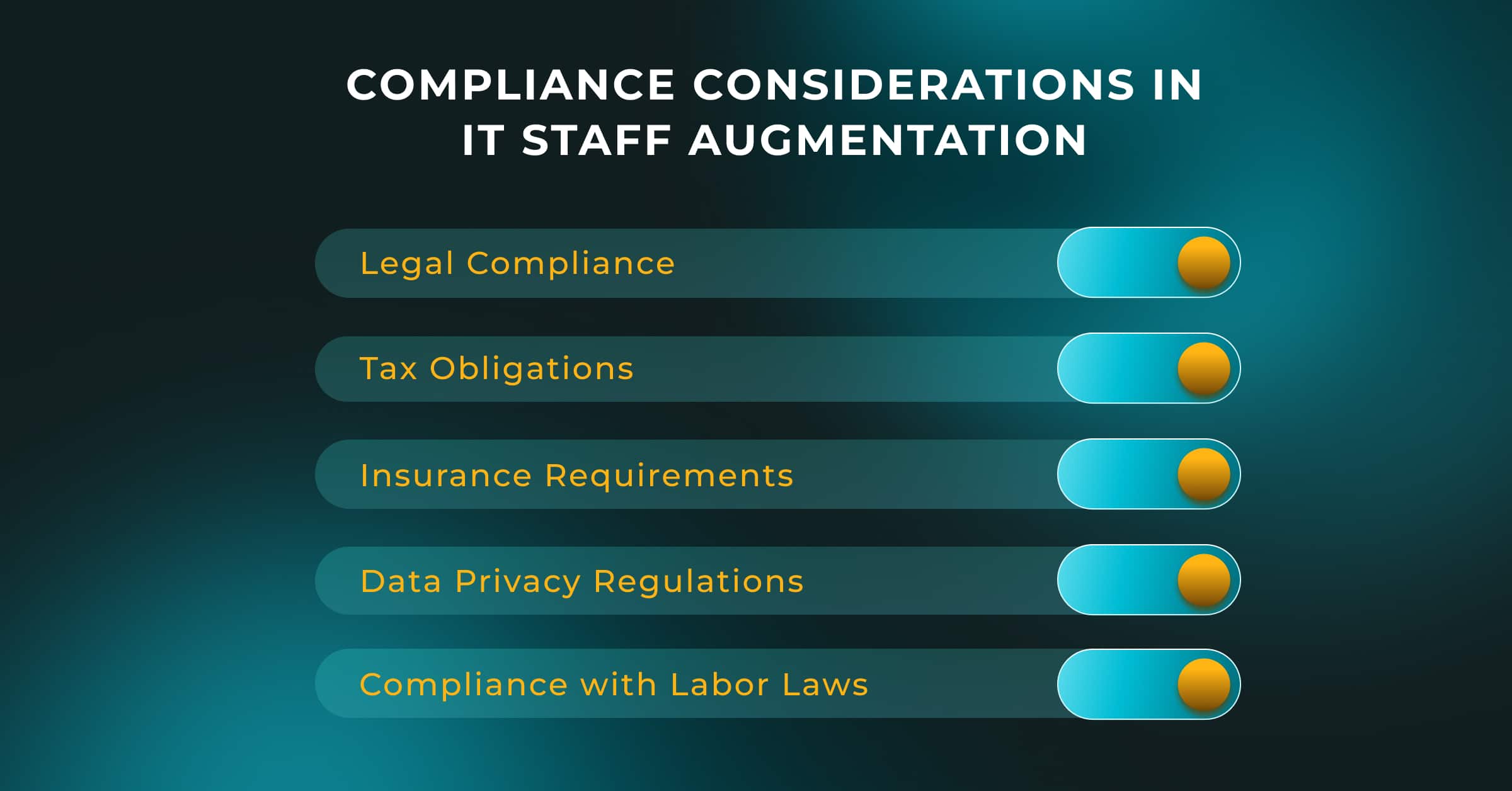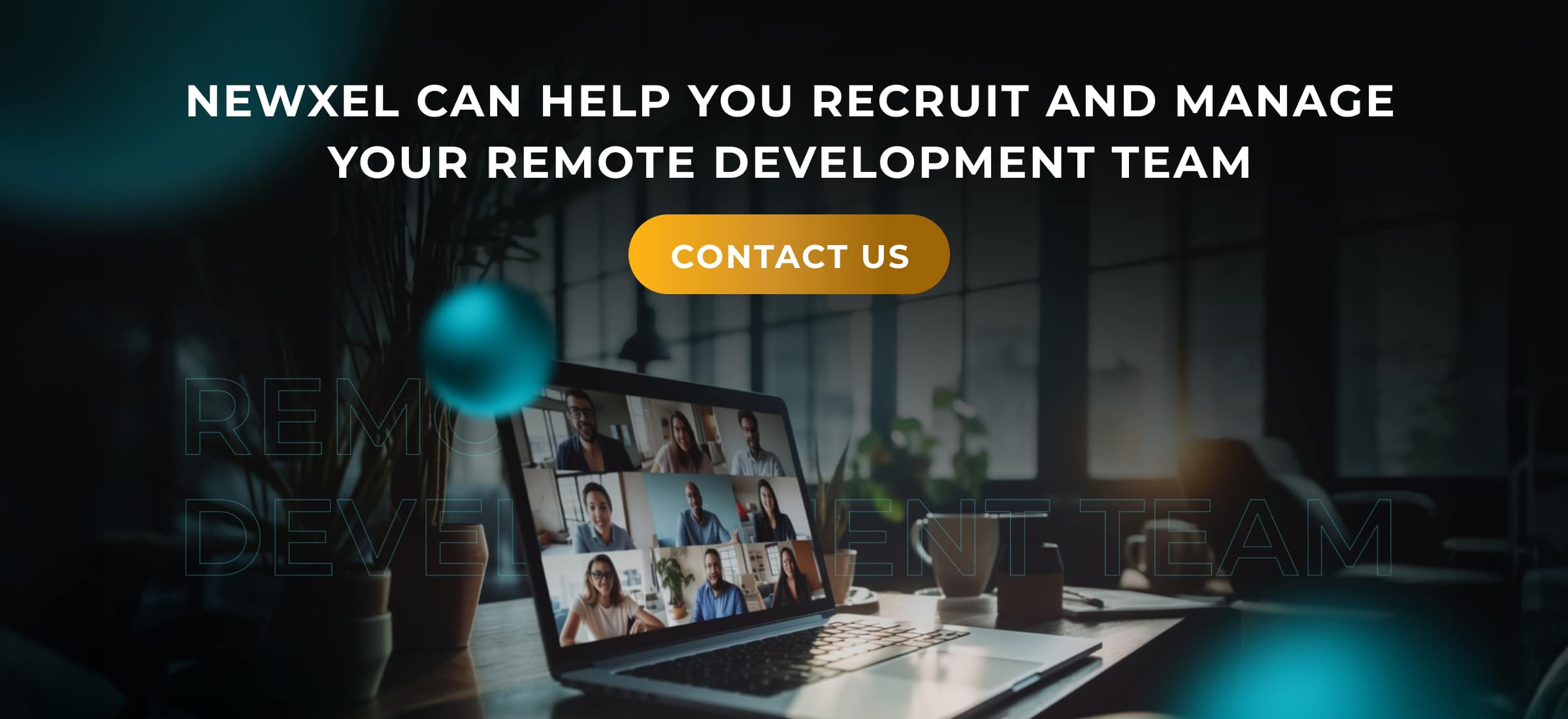Navigating Legal and Compliance Considerations in IT Staff Augmentation
The IT talent market is seeing an increase in demand for specialized talent. To close the gap, businesses are increasingly resorting to IT staff augmentation. This approach is viable because it’s supported by the rising trend of remote work, which has been growing by 1-3% annually for the past decade.

However, to effectively leverage IT staff augmentation, businesses need an in-depth understanding and adherence to complex legal and compliance issues. These include secure contracts, tax, labor laws, and data privacy regulations.
Read on as we explore these legal and compliance considerations and discuss how to address them.
Let’s begin!
Legal, Tax, Insurance, Data Privacy, and Labor Laws
When collaborating with remote IT teams, there needs to be more than just understanding the industry terminologies. Legal obligations, taxes, insurance, data privacy, and labor laws are also important. Let’s discuss these factors here.

Legal Compliance in IT Staff Augmentation
Compliance in IT staff augmentation means following the laws and regulations when taking on external talents to support a company’s internal IT team. Organizations must consider the legal Issues in IT staff augmentation and develop ways to manage them properly. This helps protect their intellectual property, reduce risks, and set clear boundaries with external contractors.
Here are some of the important points to consider.
Clear and Comprehensive Contracts
Clear contracts are essential for legal compliance in IT staff augmentation. These documents spell out expectations for both parties, covering deliverables, timelines, payment terms, and other pertinent details. By ensuring clarity and thoroughness, these contracts mitigate potential misunderstandings or conflicts throughout the project.
Intellectual Property Rights
When using the IT staff augmentation approach, ironing out intellectual property rights from the start is important. All parties must agree on who owns the work and whether or not it can be used commercially.
This covers things like source code, designs, trademarks, and other intellectual assets. In the first half of 2023, tech businesses were the focus of 42% of all IP rights cases, highlighting the need to establish precise guidelines and agreements regarding who is entitled to intellectual property in this type of setting.
Liability and Indemnification
Liability and indemnity provisions establish who is accountable and how risks are addressed in IT staff augmentation agreements. They specify liability limitations, who pays for third-party claims, and how disputes are addressed. To comply, these conditions must follow applicable laws and be fair and protective to all parties participating in the agreement.
Tax Obligations in IT Staff Augmentation
Tax obligations in IT staff augmentation usually involve adhering to local tax laws and rules to ensure compliance. Both the client and the staff augmentation provider may have their own tax duties.
Here’s what you need to know:
Worker Classification
Those who perform business tasks are usually divided into two main categories — independent contractors and employees. Independent contractors handle their own taxes, while employers are responsible for deducting taxes from employee paychecks. However, getting this classification wrong can lead to fines and legal troubles.
Getting it right is essential by considering factors like the employer’s control over the work, financial arrangements, and overall relationship dynamics.
Income Tax
Different types of workers have different tax duties. Independent contractors are responsible for handling their own income taxes. In the USA, for instance, they usually get a Form 1099 from their clients for filing taxes. For in-house employees, the case is different. Employers deduct income taxes from workers’ paychecks and file Form W-2 reports with the relevant tax authorities.
Payroll Tax
Payroll regulations must be followed by companies that provide IT staff augmentation services where applicable. For some providers, this entails ensuring that the taxes due on each employee’s behalf are computed precisely and deducted appropriately from their paychecks. The law on this differs by jurisdiction/ region so it’s important to verify from the relevant authorities to avoid costly penalties and legal troubles.
Insurance Requirements in IT Staff Augmentation
Insurance is important for managing risks when working with remote IT teams. This is an investment that benefits both clients and service providers. Here’s how it typically works.
General Liability Insurance
Such insurance is a great advantage in IT staff augmentation. It covers third-party bodily injury, property damage, and injury claims resulting from IT contractors’ activities. For example, if falling equipment, an electrical accident, or some other related injury were to occur to a delivery person or external tech person in an offshore R&D center, general liability insurance can reduce the financial risks stemming from these incidents.
It safeguards the client’s assets and reputation by covering legal costs and potential damages from such claims.
Health Insurance
Another essential insurance requirement for IT staff augmentation is coverage for public health care. IT contractors working on a contingent basis may lack access to an employer-provided health insurance plan. Therefore, the hiring organization must provide an alternative form of health coverage.
Workers’ Comp
When IT contractors are hired on a contract basis, they usually don’t need workers’ comp insurance. But it can also be a good idea to have this coverage. It gives financial support to employees hurt or sickened at work. It covers medical bills, lost wages, and rehab expenses. Getting this insurance shows the company values its employees’ welfare and meets legal obligations.
Cyber Liability Insurance
The fact that 43% of data breaches can be traced to third parties highlights the significance of investing in cyber liability insurance, particularly for small businesses that depend on external IT teams and their own workforce. This insurance guards against monetary damages from network security breaches, data breaches, and other technological mishaps. It also covers expenses like legal fees, investigation costs, and regulatory fines.
Compliance with Data Privacy Regulations
Ensuring compliance with data privacy regulations is among the most important legal considerations in IT staff augmentation. Here’s how companies typically address key aspects of data privacy regulations:
GDPR Compliance
Ensuring GDPR compliance is vital when handling personal data in the EU/EEA. This involves implementing strong data protection measures and obtaining explicit consent for data processing in cases where it is necessary. It also involves ensuring clarity on data collection, storage, and usage. Since February 2022, authorities have issued approximately 1,000 fines for GDPR breaches, covering non-compliance, insufficient compliance, lacking a valid legal basis for data processing, and more.
To prevent such issues, companies using remote IT teams must assess whether their services involve processing personal data covered by the GDPR when working with the EU/EEA. They may need to establish data processing agreements with clients and subcontractors, outlining responsibilities and compliance measures for data protection.
Confidentiality and Non-disclosure Agreements (NDAs)
NDAs are often used strategies in IT staff augmentation to safeguard sensitive data. They guarantee the security of sensitive data and other private information sent between the remote TP person and the client. These agreements specify each party’s obligations concerning managing, using, and protecting proprietary data.
Vendor Compliance and Audits
Vendor compliance and audits ensure that IT service providers follow the data privacy and security rules set by clients or regulators. This means doing thorough checks before hiring remote IT teams and including clauses in contracts that require them to meet certain standards.
Regular audits check if vendors follow data privacy laws, contract terms, and industry standards. These audits find risks, compliance gaps, and ways to improve, ensuring data stays safe during IT staff augmentation.
Compliance with Anti-Discrimination Laws in IT Staff Augmentation
Compliance with equality legislation is important in any business. Today, it is completely inappropriate and prohibited to discriminate against specialists on various grounds, such as sex, gender, religion, etc. The keys to avoiding discrimination complaints and abiding by the law include having clear anti-discrimination policies, completing diversity training, and creating an inclusive work environment.
Ensuring Legal Compliance in IT Staff Augmentation
IT staff augmentation can help organizations meet their IT demands efficiently by giving them access to significant resources. However, how can they ensure the process conforms with all applicable rules and laws? Here are some strategies.
Risk Assessment
Conducting a thorough risk assessment is essential to handling legal and compliance considerations in IT staff augmentation. This process involves several key steps.
- Identify Legal and Compliance Requirements. Documenting all applicable laws and regulations that pertain to IT staff augmentation in your jurisdiction.
- Risk Identification. Analyzing possible risks associated with IT staff augmentation, such as data privacy breaches or contract non-compliance.
- Evaluate Risk Impact. Assessing the consequences of each identified risk, including financial implications and legal penalties.
- Implement Risk Management. Developing strategies to mitigate risks, like enhancing security measures or setting clear contractual terms.
Continuous Monitoring
Maintaining compliance throughout the IT staff augmentation process requires ongoing monitoring and governance practices. Consider the following steps.
- Regular Audits. Periodically reviewing business operations to ensure alignment with laws and regulations.
- Data Security. Robust security measures, such as access limits and encryption, are being implemented to protect personal data.
- Contractual Adherence. Ensuring contracts clearly outline responsibilities for both parties involved in the augmentation process.
- Training Programs. Providing comprehensive training for employees on legal requirements concerning IT staff augmentation.
- Reporting Mechanisms. Establishing clear procedures for reporting compliance issues promptly if they arise.
Benefits of Partnering with Newxel
To ensure legal compliance in IT staff augmentation, it is crucial to partner with a reliable IT staffing provider such as Newxel. At Newxel, our expertise lies in forming and managing top-tier software development teams across Europe and other regions. Whether you are establishing global software development teams or looking to leverage offshore development services, we tailor solutions to suit your requirements perfectly.
Ready to ensure compliance and elevate your IT staffing game? Partner with Newxel today for seamless solutions tailored to your needs. Let’s build success together.
Conclusion
Compliance is a key component of any employment system, and IT staff augmentation is no different. Organizations must understand the relevant compliance laws to avoid final, legal, and reputational problems.
Hopefully, this article has covered some of the legal and compliance aspects of IT staff augmentation. It is important to point out that these considerations differ according to country, state, and even local government laws, so working with an expert is the best way to ensure that legal, tax, payroll, and all other relevant compliance standards are met.






